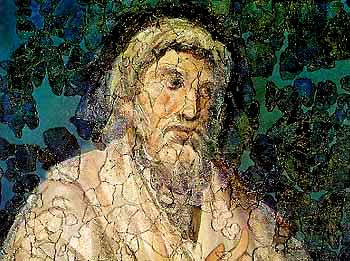
THE GODDESS ISHTAR…..THE EGG. THE SIGN OF FERTILITY. ….
Spring is in the air! Flowers and bunnies decorate the home. Father helps the children paint beautiful designs on eggs dyed in various colors. These eggs, which will later be hidden and searched for, are placed into lovely, seasonal baskets. The wonderful aroma of the hot cross buns mother is baking in the oven waft through the house. Forty days of abstaining from special foods (Lent) will finally end the next day. The whole family picks out their Sunday best to wear to the next morning’s sunrise worship service to celebrate the savior’s resurrection and the renewal of life. Everyone looks forward to a succulent ham with all the trimmings. After all, it is one of the most important religious holidays of the year.
This is a description of an ancient Babylonian family—2,000 years before Christ—honoring the resurrection of their god, Tammuz, who was brought back from the underworld by his mother/wife, Ishtar (after whom the festival Easter was named). As Ishtar was actually pronounced “Easter” in most Semitic dialects, it could be said that the family event portrayed above is one of the other many culturral festivals. The occasion could easily have been a Phrygian family honoring Attis and Cybele, or perhaps a Phoenician family worshiping Adonis and Astarte. Also fitting the description well would be a heretic Israelite family honoring the Canaanite Baal and Ashtoreth. Or this depiction could just as easily represent any number of other immoral, pagan fertility celebrations of death and resurrection—including the modern Easter celebration as it has come to us through the Anglo-Saxon fertility rites of the goddess Eostre or Ostara.

For the first two hundred years of European life in North America, only a few states, mostly in the South, paid attention to Easter.” Not until after the Civil War did Americans begin celebrating this holiday: “Easter first became an American tradition in the 1870s”
The original 13 colonies of America began as a “Christian” nation, with the cry of “No king but King Jesus!” The nation did not observe any Easter festival for an entire century after its founding.
EASTER DATE
Christian tradition is that Jesus died on March 25. This is the exact day that the resurrection of the God Attis was celebrated in Rome. However the Church father Lactantitus places the death of Jesus on March 23 and his resurrection on March 25. Doesn’t seem to be three days. However it is the exact dates of the death and resurrection of the pagan God Attis.


Lactantius.
Lucius Caecilius Firmianus Lactantius (c. 250 – c. 325) was an early Christian author who became an adviser to the first Christian Roman emperor, Constantine I.